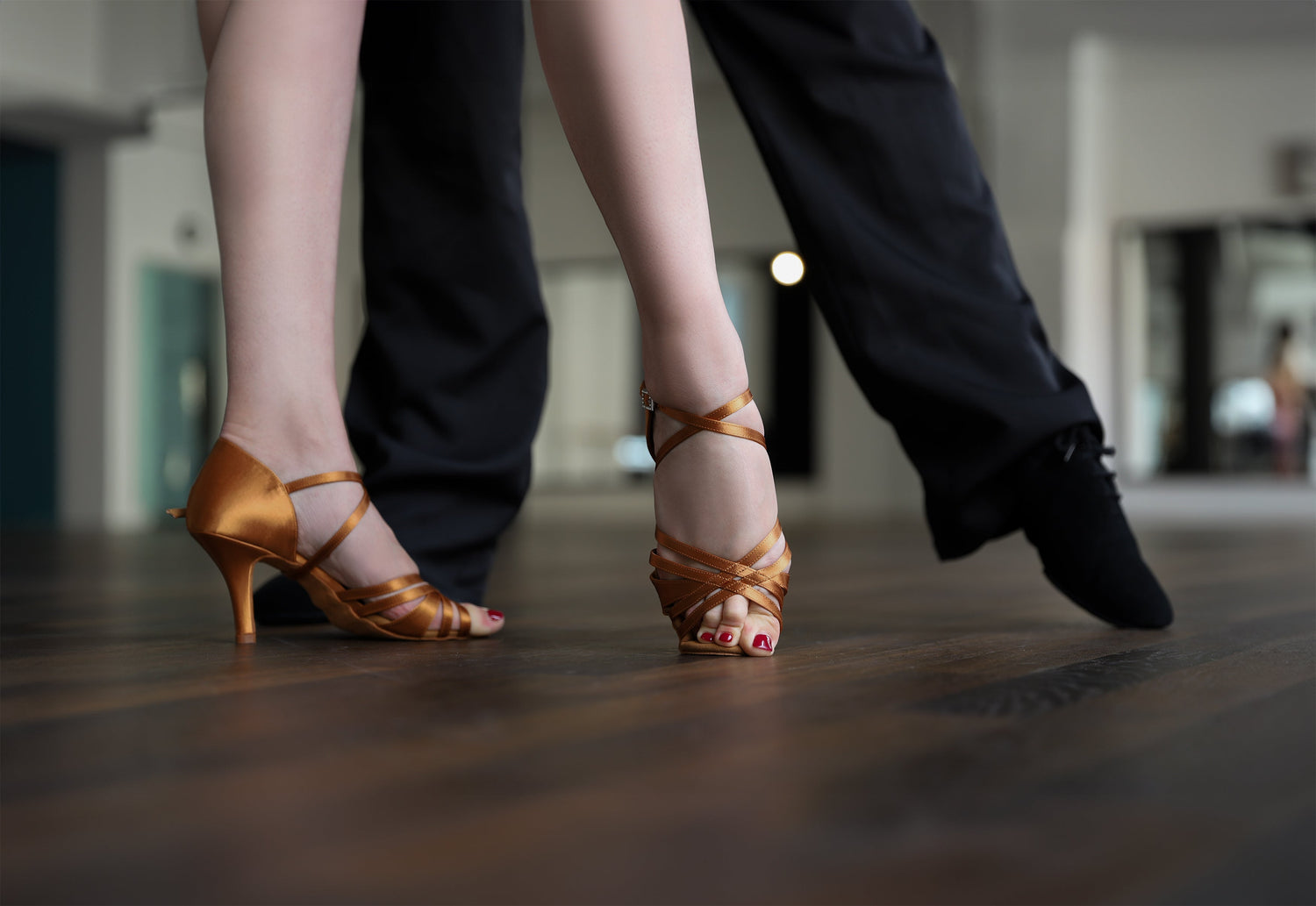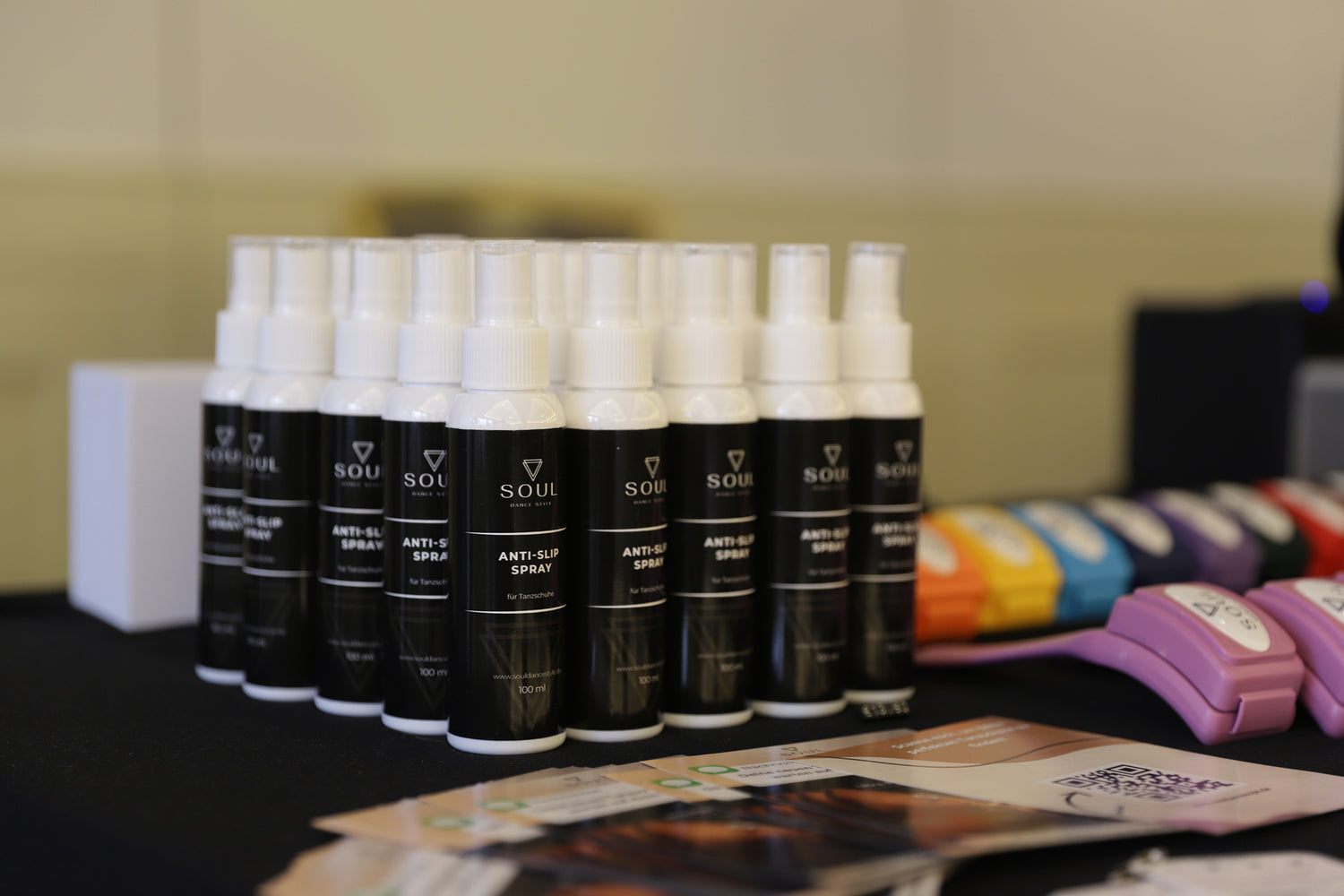For those, embarking into the captivating world of ballroom dancing, the right dance shoes are essential. Whether dedicating themselves to the waltz, tango, Viennese waltz, or quickstep, comfort and style are always a priority. Especially in lively Latin dances like the samba, cha-cha-cha, rumba, pasodoble, jive, salsa, or bachata, ensuring stability, secure grip, and excellent footwork is crucial.
Choosing dance shoes can be challenging for many. When questions like "How do I choose the right dance shoes?" or "What should I consider when selecting dance shoes?" arise, it's crucial to consider the key aspects of choosing dance shoes.
Shoe Size and Material
When purchasing dance shoes, it's important to ensure they fit your foot length precisely. Your toes should not rub against the floor during movement, but there shouldn't be uncomfortable space around the big toe either. The right width is also important; dance shoes should fit snugly on the foot. Leather shoes tend to have the tendency to stretch slightly during wear. If you're just starting out with dancing, I recommend choosing satin shoes as they stretch slightly less than leather shoes.
The Sole
The soles of dance shoes are specially designed to move smoothly on the dance floor, which is why they are extremely thin and flexible. They are often made of suede or leather, giving them natural flexibility. This flexibility is crucial as it allows dancers to actively move their feet, stretch their toes, and perform all necessary movements. Dance shoes can even be bent in the middle without damage. This is facilitated by a short supinator, a plate under the sole that runs from the heel to the middle of the foot. In contrast, the supinators in everyday shoes are often longer, making the sole stiffer. Therefore, you don't need to worry that dance shoes are particularly flexible and differ from conventional shoes.
Durability and Lightweight
Dance shoes undergo heavy use and must therefore be robust enough to withstand hours of training and performances. At the same time, it's important that they are lightweight so that they are hardly noticeable on the foot and dancing doesn't cause physical discomfort.
Heel Type and Height
For ladies mastering Latin dances, choosing the right heels is crucial. Typically, dance shoes for these dances are made with high heels. The heel should fit snugly without wobbling or leaning in any direction. Poor fit can not only be uncomfortable but also increase the risk of foot injuries, whether during training or a performance.
The choice of heel shape and height significantly influences the aesthetics and safety of dance movements. The height of the heel is individually determined based on age, dance experience, and dance style.
The flare heel is a popular choice for amateurs, hobby dancers, and beginners. Despite its height, it offers remarkable stability and is also appreciated by many professionals. On the other hand, the slim heel is more suitable for professional dancers as it poses a greater challenge in balancing and thus emphasizes the professionalism and expertise of the dancers. However, experienced hobby dancers often also prefer this type of heel. The training heel is particularly stable and suitable for both beginners and dancers who want to dance for many hours at a time.
Discover the different types of heels offered by SOUL and find your perfect companion for an elegant and secure performance on the dance floor.
Design
Closed or broad woven fronts provide a solid base, while straps in the front allow for more freedom of movement. Models with rhinestones are suitable for both competitions and Latin dances such as salsa, bachata, kizomba, while classic models without rhinestones are ideal for training sessions.
Secure Fit through Straps
The design of the front parts of ladies' Latin sandals typically presents thin, intertwining straps, giving them an elegant and flexible aesthetic. This design allows for more precise footwork during movement, which is of great importance to female dancers. Alternatively, variations with knots and buckles are also available, with some models featuring longer straps that wrap around the foot or ankle.
It is important to note that the straps of dance shoes tend to stretch over time. Therefore, it is advisable to choose shoes that have additional holes or adjustment options on the straps so that you can adjust the fit as needed.
Heel Protectors
Heel protectors are special plastic products, most of which are transparent, designed to protect the heels of your dance shoes from premature wear. These small details can easily be placed on the heel of your dance shoes and not only increase the stability of your dance shoes on the dance floor but also protect the floor itself from unwanted scratches. By reducing the strain on the heels, heel protectors help extend the lifespan of your dance shoes. They are thus an indispensable accessory for dancers who want to properly maintain their dance shoes. Discover our selection of heel protectors here.





